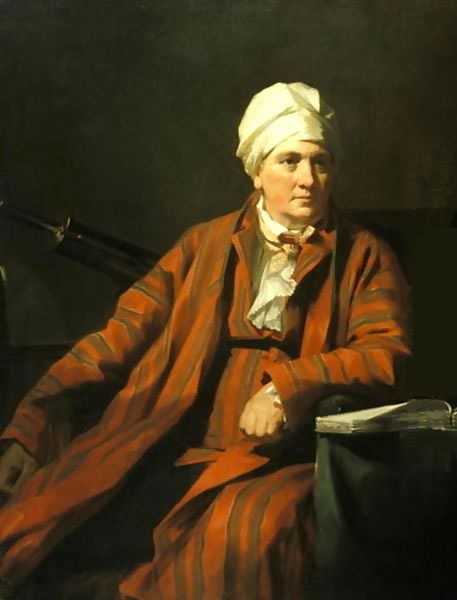 |
| John Robison |
A professor of natural philosophy at the University of Edinburgh in Scotland, John Robison (1739–1805) was a distinguished scientist and writer. He was also author of Proofs of a Conspiracy against All the Religions and Governments of Europe Carried On in the Secret Meetings of the Freemasons, Illuminati, and Reading Societies, Collected from Good Authorities (1797), which alleged that the Illuminati (a secret society originally founded in Bavaria in 1776) were behind many of the major events of the day, and the French Revolution in particular.
Robison’s exposé was widely circulated and much discussed in the conspiratorial climate of the late 1790s (not least among New England leaders fearful of foreign threats to the fledgling American republic), and, remarkably, it is still much cited and remains in print today.
The son of a Scottish merchant, Robison was born in 1739 and attended the University of Glasgow while in his teens. After serving as tutor to the son of Admiral Sir Charles Knowles, he was next commissioned to conduct sea trials of the newly invented nautical chronometer, before accompanying Sir Charles to Russia. Returning to Scotland, Robison took up the chair of natural philosophy (what would now be termed physics) at the University of Edinburgh in 1773.
  |
He developed a reputation as a distinguished scientist, and was invited to write entries for the third edition of the Encyclopaedia Britannica on topics such as electricity, fluid dynamics, and magnetism. In 1783 he was elected general secretary of the newly formed Royal Society of Edinburgh (an organization, like its London counterpart, devoted to furthering scientific knowledge).
Like many leading figures in eighteenth-century society Robison was a Mason, and Proofs of a Conspiracy was careful to make a distinction between the respectable, charitable activities of British freemasons, and the dangers of what the author saw as an immoral, godless, and secretive, corrupt version of masonry that had flourished on the continent.
In his lengthy book, Robison alleged that the Illuminati had merely gone underground after they had been disbanded by the Elector of Bavaria in 1787, and had then plotted to overthrow the Christian religion and all established governments.
He argued that the French Revolution could only be explained by such a theory, since the eruption of revolutionary agitation right across the country could not have been the result of a spontaneous uprising, but must have been the result of a secret, concerted plan.
His proof of the connection between the banned German secret society and the leaders of the French Revolution was some rather slim evidence of an association between some middle-ranking Illuminati and Mirabeau and Talleyrand, French freemasons who went on to become important politicians in the 1790s.
Robison’s book also warned that cells of the suppressed Illuminati had been set up in America. Along with Augustin de Barruel’s four-volume exposé of the dangerous reach of freemasonry (the first two voumes of which just beat Proofs of a Conspiracy to the press), Robison’s book caused a stir in the fevered climate of the late 1790s in America.
His claims were widely reported in the press, and influential figures such as Jedidiah Morse expanded on Robison’s theory in sermons and speeches. The scare stories about the dangers of an underground Illuminati conspiracy plotting to undermine America’s liberties fed into the Federalist agitation that resulted in the Alien and Sedition Acts of 1798.
Although Robison’s book fell into obscurity once the immediate political climate changed in the later nineteenth century, it has continued to be cited as a major source on the existence of an all-powerful ultrasecretive conspiracy ever since.
Since the 1960s the work has become a mainstay of, on the one hand, right-wing diatribes against the power of shadowy, power-hungry, atheistic globalists (the Illuminati in this view become forerunners of Communism) and, on the hand, anti-authoritarian versions of conspiracy theory that create an account of a long-running, semimystical conspiracy of the elite that its unmaskers believe dates back to beyond even the eighteenth century.